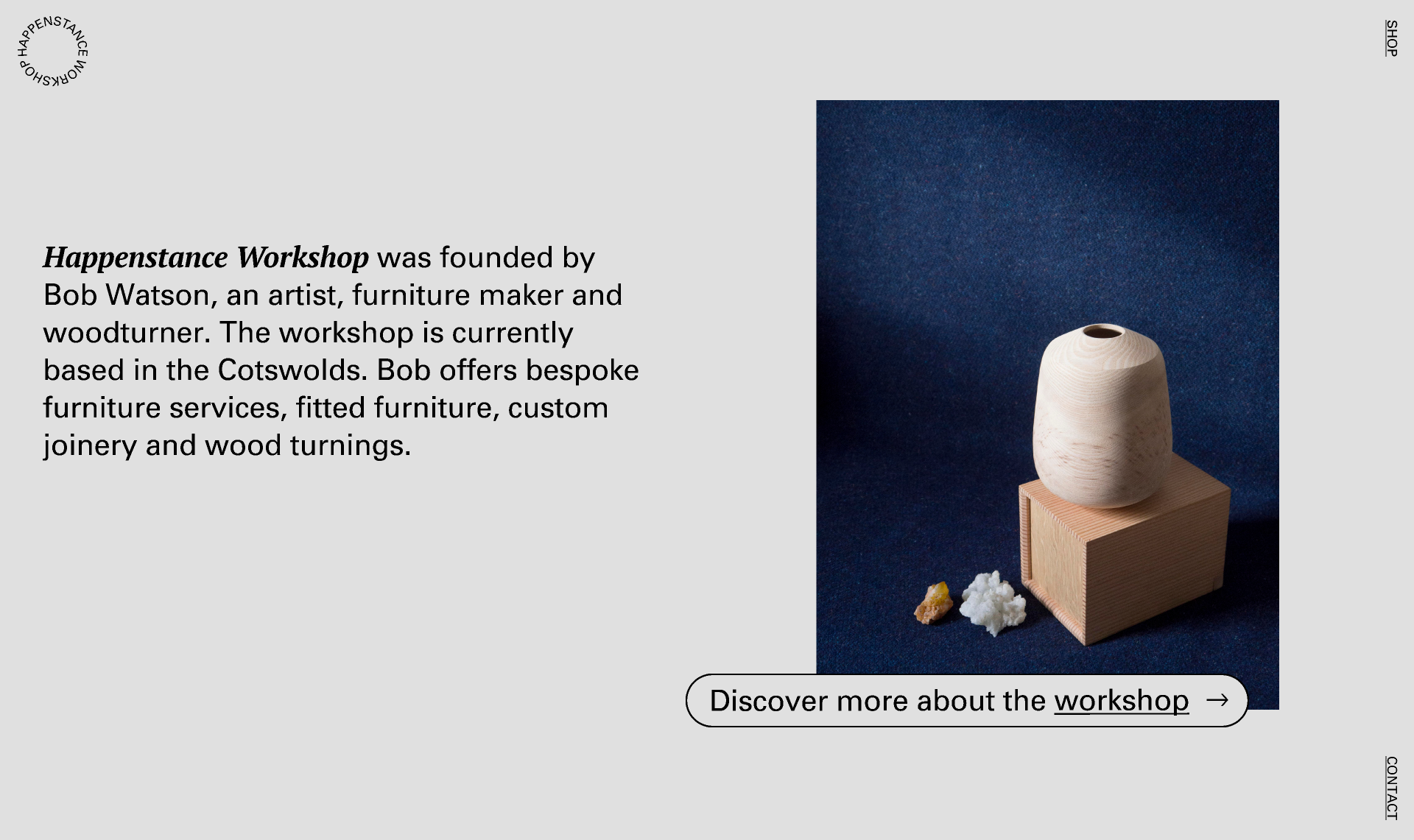
Bob Watson is an artist, furniture maker, and woodturner. Currently situated in a studio amongst the beech trees of the Cotswolds, he designs ways of working with and learning from wood. Founded in 2013, Happenstance Workshop takes its name from the serendipitous and circumstancial nature of Bob’s process. Every piece he shapes is the result of an investigation into a chosen body of wood, guided by the individual properties it presents him with.


Bob Watson uses chalk to outline various possibilities
Beech trees are one of the most prevalent species growing along the steep western scarp of the Cotswolds. When a tree dies, its moisture reserves begin to dissipate and the drying process within its body begins. External systems within the ecosystem will continue to shape the wood after death. If undisturbed, these entropic processes run until the material has fully dis-integrated into the soil. Certain species of fungi draw territorial lines through a beech tree’s body, creating spalting patterns. Woodboring beetles also plague the dying tree, eating paths through the grain, led by fluctuations in nutrient levels. Rain endlessly saturates the material until it eventually collapses.

Fallen beech tree logs, Cotswolds scarp in autumn
Bob Watsons’s sculptural work begins (over and over) on his path through the beech woodland. Here, an untold number of biological narratives play out simultaneously, and with varying levels of predictability. To work with the woodland floor material, Bob first has the task of forecasting the woodland’s lifecycles. His shaping of the wood begins when the material crosses the threshold between woodland and workshop. This workshop environment was built to support multiple processes simultaneously, echoing the woodland ecosystem it was built within. Projects exist at varying levels of finality. Their fates often overlap and merge, two-part forms are created under specific and contingent circumstances. Sawdust waste from one piece helps to dry another.

Bob Watson’s wood collection in his workshop
Bob Watson using a roughing gauge to turn a bowl
Bob’s drying procedures, sketches, and small maquettes allow him to address the wood with confidence at the lathe. This preliminary work is done with the understanding that plans may change, he must adapt to the material’s needs throughout the shaping. The pieces are formed when harmony is reached between the material, Bob’s movements, and the machine.
Interactive demonstrating lathe technique
From the orientation of the wood in relation to the final form, to the point of attachment between the material and machine—all actions and effects have to be calculated constantly. His decisions are often irreversible, yet make way for the next set of possibilities. Turning wood is a reductive process: material is always being taken away from the main body of the work.

Closeup of sawdust created by the lathe
Bob Watson describes one of his pieces
Bob’s multiple-part pieces often marry green and processed wood to create complex shapes. The erratic nature of green wood is emphasised once it is required to co-operate with another piece. Bob first ensures that he has studied the individual idiosyncrasies of the chosen specimens: within this he predicts the potential changes bought on by the drying process. He creates micro-climates for the wood in sawdust-filled boxes, this allows him to control the drying process of the wood.
An endless amount of technical challenges are encountered in the process of fusing wooden forms with contrasting physical properties. For Bob, the resulting pieces represent the possibilities of wood as a material. The marriage of green and processed woods helps to highlight the ways in which it has been utilised for mass manufacture. Each new piece helps him to push his investigations forward.

Bob Watson holds log showing pith orientation

Bob Watson’s available work can be found at the Happenstance Workshop
Items
£0
Postage
Calculated at checkout
Total
£0
Continue to checkout
